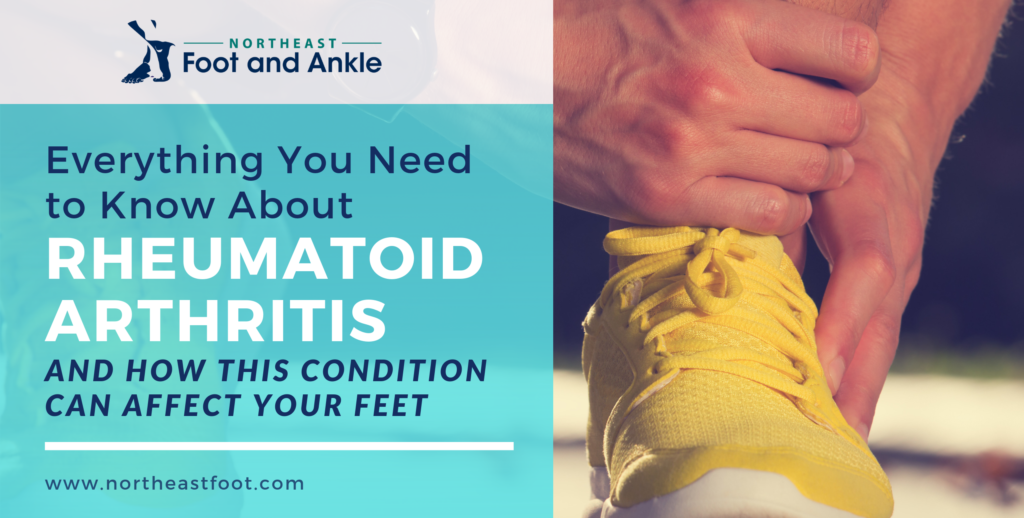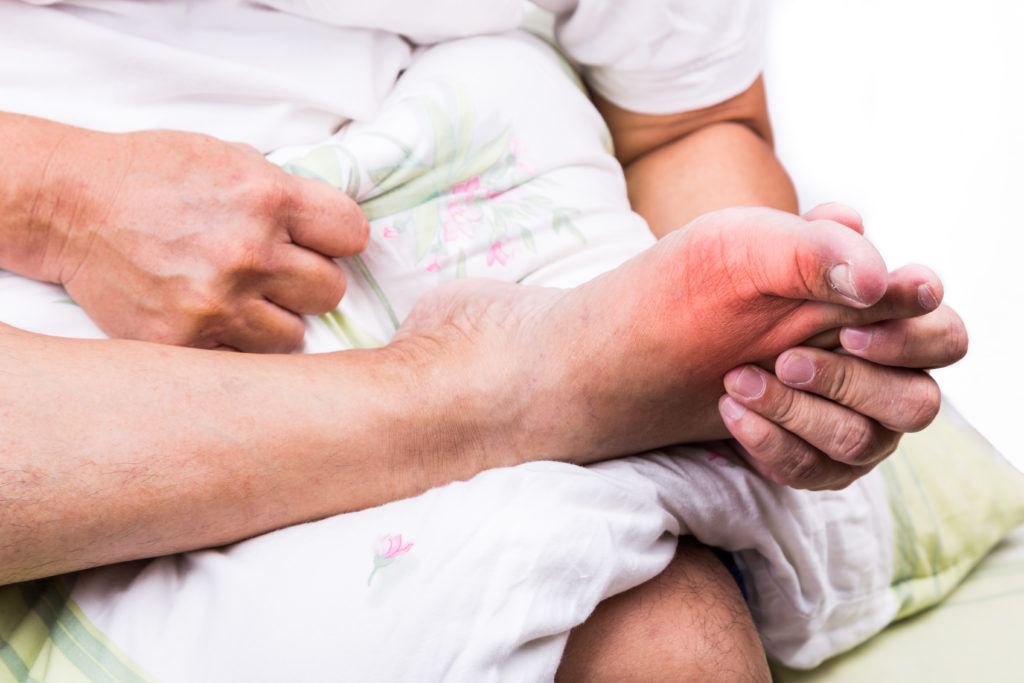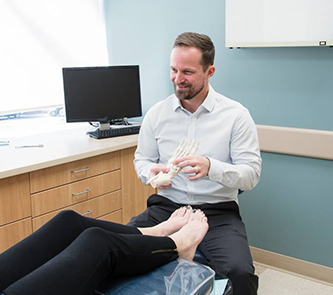Everything You Need to Know About Rheumatoid Arthritis (and How This Condition Can Affect Your Feet)
Rheumatoid arthritis (RA).
You may have heard of this medical condition on TV ads here and there, or perhaps one of your older aunts or uncles had this problem as you were growing up. But do you know what it is? What’s more, do you know how this condition affects the feet and ankles? Because you should!
This is especially true if you fall in that latter category (knowing of someone in your family who had rheumatoid arthritis). Why? Well, simply put, your risk of also developing this painful problem naturally increases when a family member is known to have had it as well.
You see, rheumatoid arthritis has a genetic component, and if it runs in the family, then you will be more likely to develop it, too.
So now that we have your attention, let’s dive a little deeper and discuss what exactly RA is, and how it can affect your feet and ankles.

Understanding RA (and How it Affects the Feet)
Rheumatoid arthritis is a disease that causes cells of the immune system to malfunction and attack healthy joints, resulting in inflammation. When this happens, you may start to experience pain, swelling, redness, joint stiffness, and unusual warmth around the affected joint(s). One of the most common signs of RA is stiffness in the morning, so be sure to pay attention to any irregularities.
Now, rheumatoid arthritis can affect most bones and joints in the body – which you might have already known. But did you know that 90 percent of people who actually develop RA will feel its effects in the feet or ankles first?
Indeed, RA can affect any of the foot’s joints, and the resulting symptoms can easily make it difficult to walk, or even perform simple daily activities. Often painful symptoms affect both feet in similar places, and many patients suffering from RA will develop problems around the big toe joint, which contributes to the development (or exacerbation) of bunions.
That’s why addressing early symptoms of RA is so important. When left untreated, this condition can cause serious damage to the cartilage and bones in the joint, leading to permanent deformity and disability. And at that point, surgery is the only way to correct the problem and restore full mobility and health. (But more on that in a bit.)
Knowing the Types of Rheumatoid Arthritis in the Feet
Of course, there are different types of arthritis, and these are usually categorized based on the affected area of the foot. They include:
- Forefoot RA. This type of RA essentially causes early inflammation, cartilage damage, arthritis and dislocation of the toes at the metatarsal heads. When caught early, rheumatoid forefoot deformity can be corrected through repositioning and realigning procedures that can save the joints and decrease the risk of dislocation and further damage.
- Hindfoot RA. This type of RA results in painful loss of cartilage and deformities of the joints of the middle and back of the foot. But when caught early, simple conservative measures like bracing and wearing custom orthotics can be used to significantly limit the progression of deformity.
- Ankle RA. This type of RA typically causes loss of cartilage and deformity of the affected joint. But if caught early, orthotic therapy, injection therapy, and bracing can be used to delay the progression of RA and consequential deformities.
You should keep in mind, however, that surgery is often needed to relieve severe pain associated with this condition and reduce the appearance of any consequential deformity. This may involve fusing, resetting, or replacing affected joints and bones.
If your condition is too severe to respond adequately to conservative measures, and we determine that a surgical approach is best, know that we will thoroughly discuss what this means so you can move forward in confidence.
That said, avoiding this common need for surgery is one of the best reasons why you should seek appropriate treatment as soon as you notice any concerning symptoms. When caught in its early stages, RA can be managed well through simple, non-invasive steps.
(Which takes us to our next point.)
Managing RA Symptoms with Conservative Treatments
If your condition is not causing a substantial amount of discomfort or interfering with your mobility, you may benefit from simply wearing the right pair of shoes. Doing so can help alleviate foot pain and prevent foot deformities from becoming worse.
When looking for shoes, here are a few things to take into consideration:
- Look for shoes that allow your toes to wiggle freely in the toe box and leave plenty of room for any existing foot deformities you may already have developed – like bunions.
- Make sure your footwear provides appropriate arch support to help distribute your body weight evenly on the entire foot.
- Avoid wearing footwear with heels higher than 2 inches.
- Consider wearing custom orthotics to make sure you are getting support and protection in those areas you need them most.
Other beneficial habits to keep in mind include:
- Maintaining a healthy body weight to reduce the risk of pain, as well as further RA progression.
- Changing your exercise routine to include activities that don’t place too much pressure on the feet, such as swimming and bicycling.
- Alternating between sitting and standing throughout the day to relieve undue strain and pressure on the feet.
The best way to manage painful symptoms caused by RA is by keeping your condition under control. And we can help you do just that right here at our Northeast Foot and Ankle office!

Finding Effective RA Treatment at Northeast Foot and Ankle
Don’t wait until your condition has become too severe to respond to conservative treatments. Here at Northeast Foot and Ankle, we can help you avoid the need for surgery by using advanced treatment methods, like laser therapy. These non-invasive treatments, coupled with healthy habits at home, may be all you need to find the relief you have been looking for this whole time!
But it’s important you start treatment as soon as possible. So, give our office a call at (603) 431-6070 to schedule an appointment today. And, if you prefer to connect with us online, please feel free to fill out our online contact form and a member of our staff will reach out to you.
Pay Your Bill
Make a payment online through our payment portal or Care Credit!
Portsmouth Office
14 Manchester Square, Suite 250
Portsmouth, NH 03801
Nashua Office
17 Riverside Street, Suite 205
Nashua, NH 03062
Website Hosted by SC Digital



